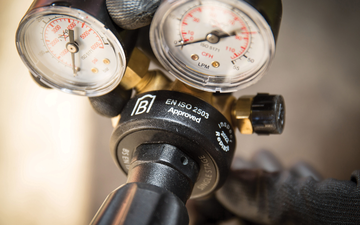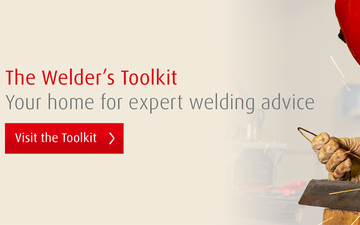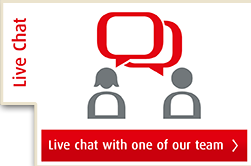- Official BOC UK Online | Industrial Gases | Products & Solutions | BOConline UK
-
Shop
- Industries
- Processes
- Gases & Equipment
-
Solutions
-
Services
-
Health & Safety
-
Contact & Support
- What's Happening
-
Net Zero Strategies
How to: Connect your Shielding Gas Cylinder Safely
Posted by BOC

How much attention do you give to connecting your shielding gas cylinder and regulator? High pressure gas cylinders can pose a number of risks when not handled or connected correctly.
In this blog we provide a reminder of the important safety considerations and take you through the steps to achieve a safe, strong and leak-free cylinder connection.
Before you start…
Choose the right location. It’s important that your working area is well ventilated, uncluttered, well-lit and secure.
When you’re ready to connect your cylinder, make sure:
- You wear the correct PPE. Use steel toe-capped shoes or boots, suitable gloves and clear safety glasses as a minimum when moving and connecting high pressure gas cylinders.
- Your cylinder is upright and secure. Your cylinder should be secured in a suitable trolley or alternative device designed to ensure it cannot fall over.
- You have sufficient space. Make sure there is enough room to move around the cylinder and access and operate the cylinder valve and regulator.
- You are away from any grinding or welding sparks. Make sure when connecting your cylinder that any risk of gas leakage or exposure is kept away from any grinding or welding activities.
- Your space is secure. Check that no-one can walk into the area while you’re connecting your shielding gas cylinder.
Important Note: Never try to catch a falling cylinder. You are likely to get injured. Cylinders must be secured at all times.
Check your equipment
- Check the date on your regulator. Your regulator should be in date – less than five years old, or in accordance with the manufacturer’s recommendation.
- Check the cylinder valve outlet for any dirt or contamination. Wipe the area with a clean, dry, oil free, and lint free cloth or suitable paper towel. Excessive contamination can prevent an effective seal between the valve outlet and the equipment, creating a leak path. Never snift or vent high-pressure regulators.
- Ensure the regulator’s pressure adjustment (PA) screw is fully wound out. Turn it in an anticlockwise direction before fitting to the cylinder, so it can be adjusted correctly later.
Connecting your gas
Follow these tips for a smooth and safe connection:
- Use the correct cylinder spanner and only use moderate force to connect the regulator to the cylinder. Don’t overtighten. The same goes for fitting the flowmeter or shielding gas delivery hose.
- Make sure there is clear access to the cylinder valve/ key and regulator in case you need to shut off the cylinder in an emergency – ensure the regulator is positioned for easy access to operate the regulator pressure adjusting screw or cylinder valve. Ensure the flow meter is also easily accessible and visible.
- Open the gas cylinder valve slowly. This only requires between a half and three-quarter turn to be fully open.
- Check for leaks. When the cylinder and regulator are turned to the correct working pressure, spray the connection joints with approved leak detection fluid. The fluid will bubble at the site of any leaks. If a leak is identified, turn the cylinder valve off, depressurise the system and retighten the regulator.
- If there are no leaks, wind in the regulator pressure adjusting screw to achieve the right gas pressure or shielding gas flow rate for your welding process.
- Finally, check the shielding gas flowrate with a nozzle flow meter.
* Please note: this guide relates to shielding gas cylinders only.
Watch our video below, An Introduction to MAG Welding: Setting Up Your Workspace, Cylinder and Regulator, for more advice on this topic.
You can find out more about how to handle and operate cylinders safely in The Welder’s Toolkit, our online resource for the welding community, and also on the British Compressed Gases Association (BCGA) website.
Please note: cookies must be enabled to view the video. If you do not see the video, please click on ‘Cookie Settings’ and enable Cookies in your browser.

